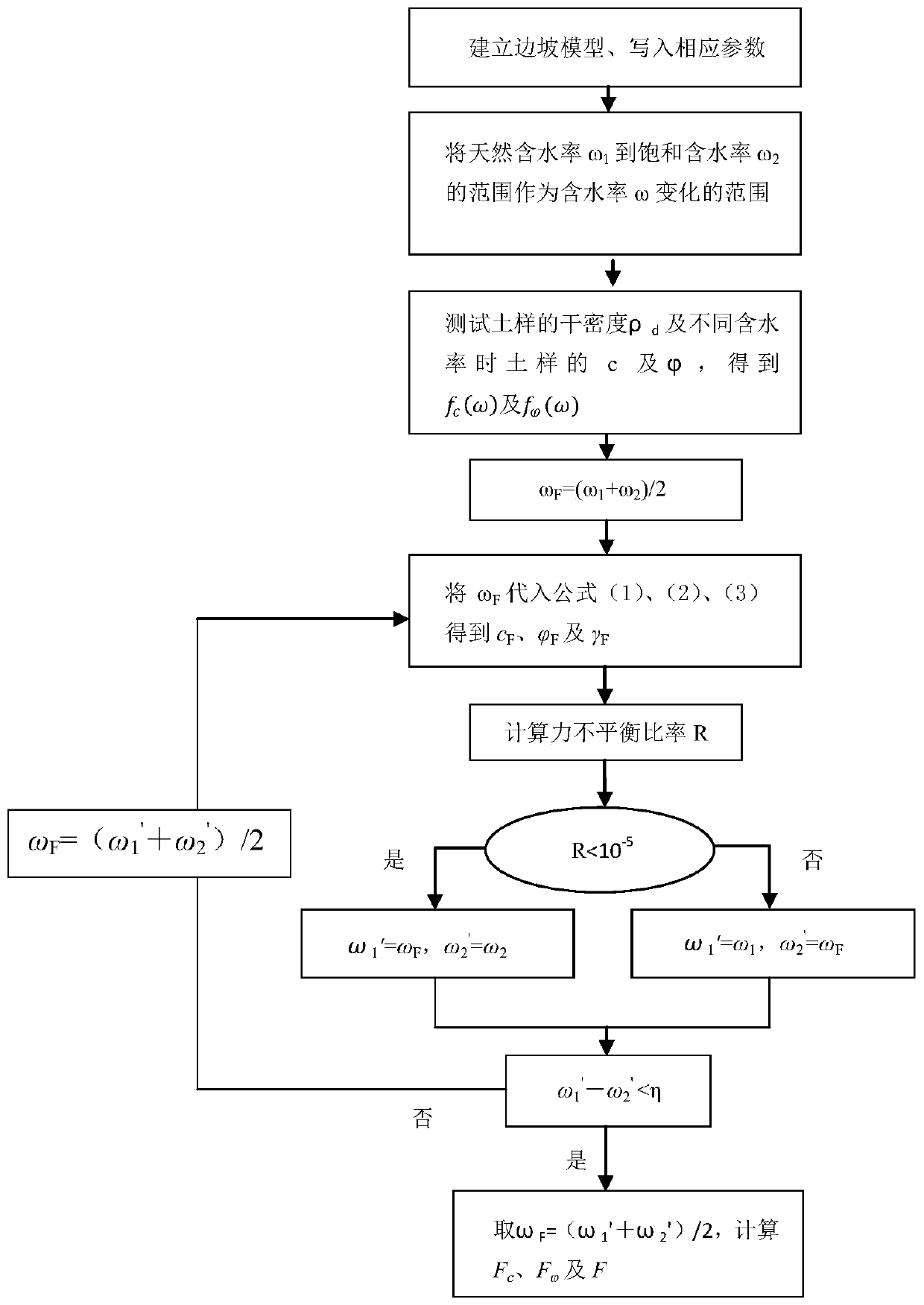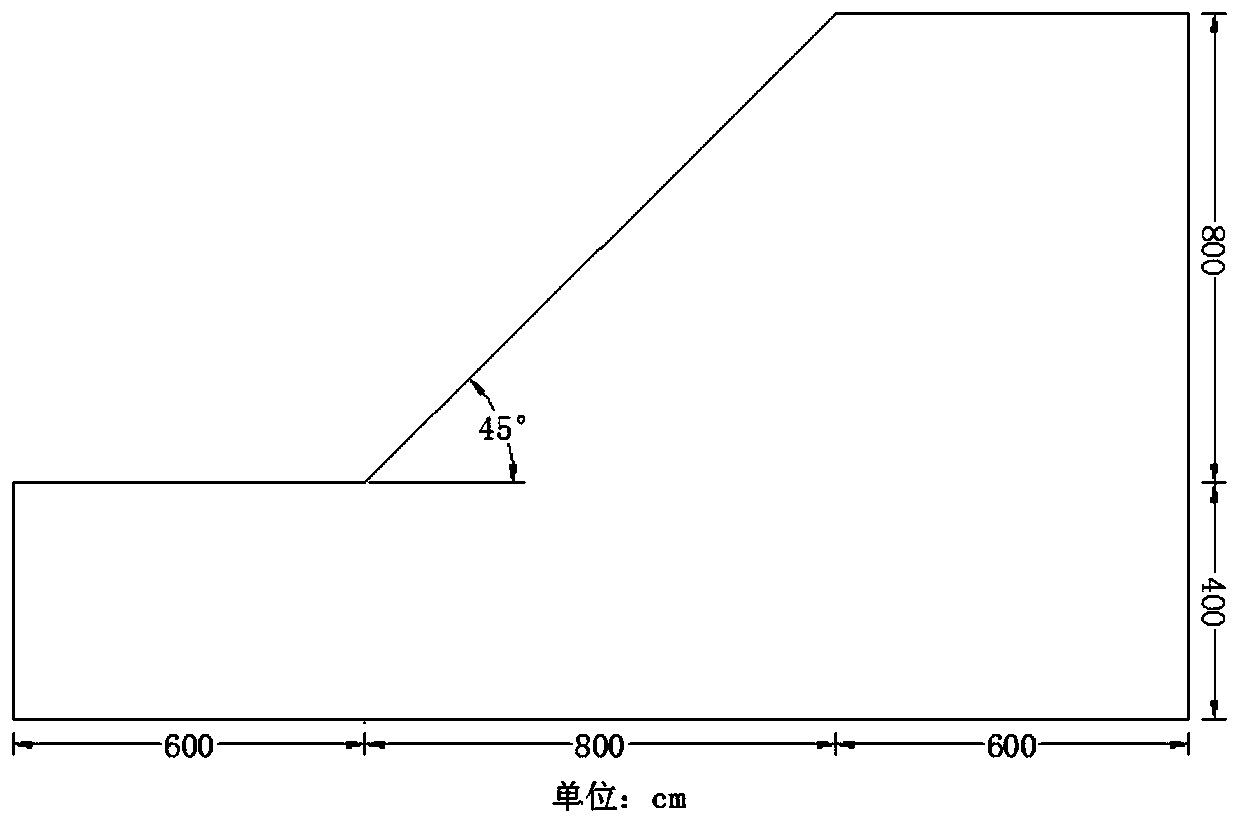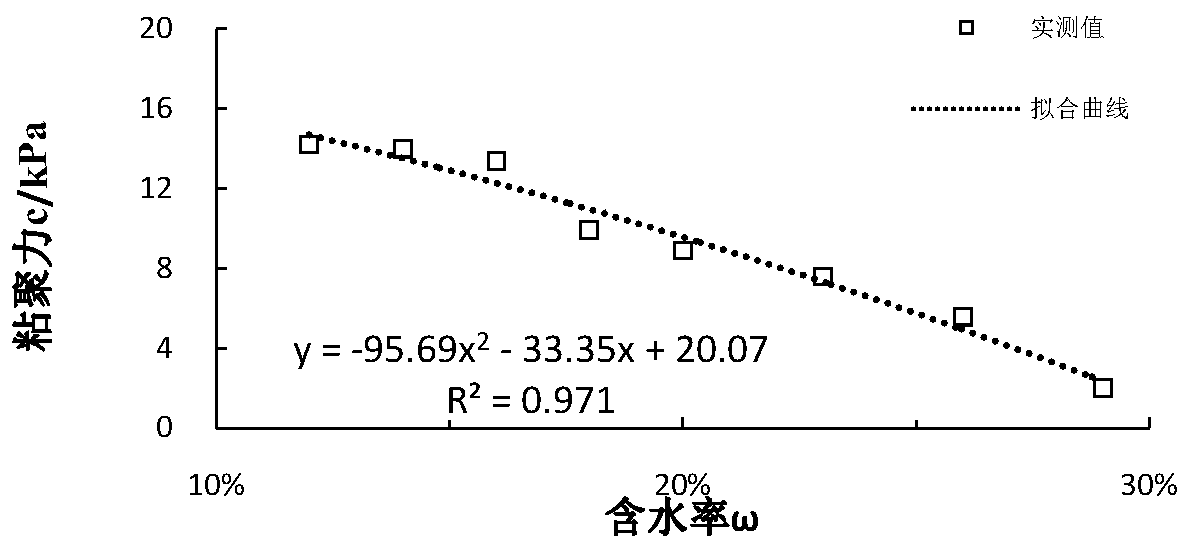Method for Calculating Safety Factor of Slope Stability Based on Strength Reduction of Humidification Conditions
A technology of safety factor and strength reduction, which is applied in the field of analysis and calculation of the stability and safety factor of loess slope engineering, can solve the problems of progressive damage and failure of soil, unclear concept of strength reduction mechanics, and failure to reflect strength reduction. Mechanism of soil failure mechanics and other issues, to achieve the effect of preventing and predicting slope instability and failure, and scientific methods
- Summary
- Abstract
- Description
- Claims
- Application Information
AI Technical Summary
Problems solved by technology
Method used
Image
Examples
Embodiment
[0056] In this embodiment, the slope excavated by the trench reclamation project in Wanhuashan, Yan'an City, Shaanxi Province is selected for research. The slope height is 8m, the comprehensive slope ratio is 1:1, and the slope soil layer is uniform. Slope diagram as figure 2 shown. The dry density of the soil ρ d 1.35g / cm 3 , with a natural moisture content of 12%, belonging to Q 3 The physical properties of loess and soil samples are shown in Table 1. The saturated moisture content of the soil sample under rainfall conditions is 29% as measured by the indoor rainfall infiltration test. The basic mechanical properties of the measured soil samples are listed in Table 2.
[0057] Table 1 Physical properties of soil samples
[0058]
[0059] Table 2 Basic mechanical properties of soil samples
[0060]
PUM
 Login to View More
Login to View More Abstract
Description
Claims
Application Information
 Login to View More
Login to View More - R&D
- Intellectual Property
- Life Sciences
- Materials
- Tech Scout
- Unparalleled Data Quality
- Higher Quality Content
- 60% Fewer Hallucinations
Browse by: Latest US Patents, China's latest patents, Technical Efficacy Thesaurus, Application Domain, Technology Topic, Popular Technical Reports.
© 2025 PatSnap. All rights reserved.Legal|Privacy policy|Modern Slavery Act Transparency Statement|Sitemap|About US| Contact US: help@patsnap.com



